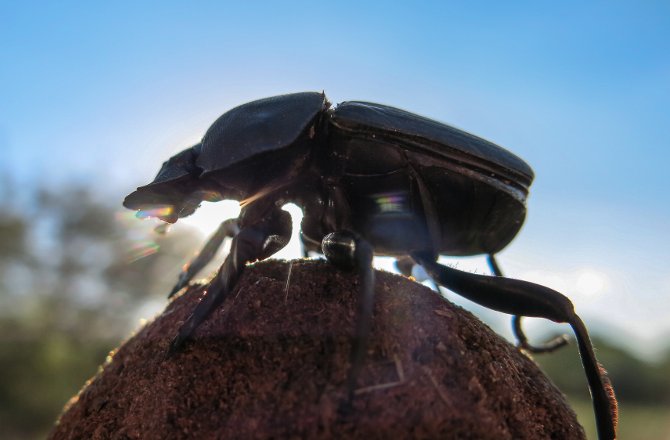
PHOTO: Basil el Jundi / Lund University
Some time back, researchers noted the lowly dung beetle was using the celestial sky as a navigation tool, but scientists from Sweden’s Lund University say they have found a surprising new revelation about the process, according to discovery.com.
The research team says the beetles don’t do navigational calculations during their journey, but instead take a mental photograph of the sky to use. And they take the picture while doing a little “dance” on top of a pile of poop.
A little background information. Dung beetles, as the name implies, eat poop. But they don’t just crawl onto a pile and start eating. The would be much too dangerous for the insects, as they would be sitting prey for birds and other insect eating creatures.
Instead, they roll up a small ball of the poop and roll it to a safe location for devouring, out of site, hopefully, from their predators, and also to protect the meal from other dung beetles. Amazingly, they always travel in a straight line.
The same research team were the ones to discover the navigational skills of the dung beetles back in 2013 through previous research. In the new study, they placed the beetles in a facility where they could use a simulated artificial sky to study the insects as they navigated across the ground. By doing this, they could change the position of the sun or moon in the sky to test the skills of the beetles.
After studying the beetles, the researchers surmised the insects were taking a mental snapshot of the sky during their dance atop the poop ball, and using that to control their route by syncing the current sky with their mental image.
Lead researcher Basil el Jundi said in a statement, “We are the first to have shown that dung beetles are taking these snapshots. We are also the first to show how they store and use the images inside their tiny brains.”
El Jundi added other animals also use the position of the celestial bodies to navigate, but the beetles “are the only ones to take a snapshot where they gather information about how various celestial bodies, such as the sun, moon and stars, are positioned.”
The researchers say more studies are needed to learn exactly how this process takes place in the brains of the dung beetles. The findings from the research team were published in the journal Current Biology.

Leave a Reply